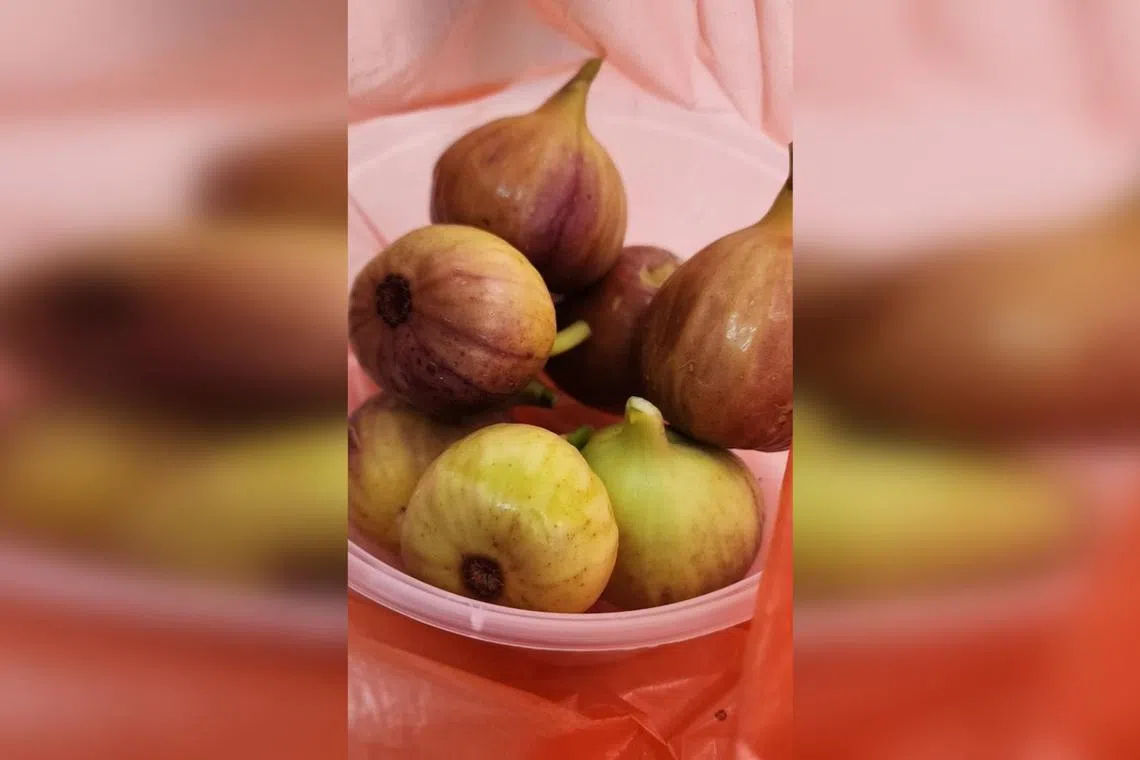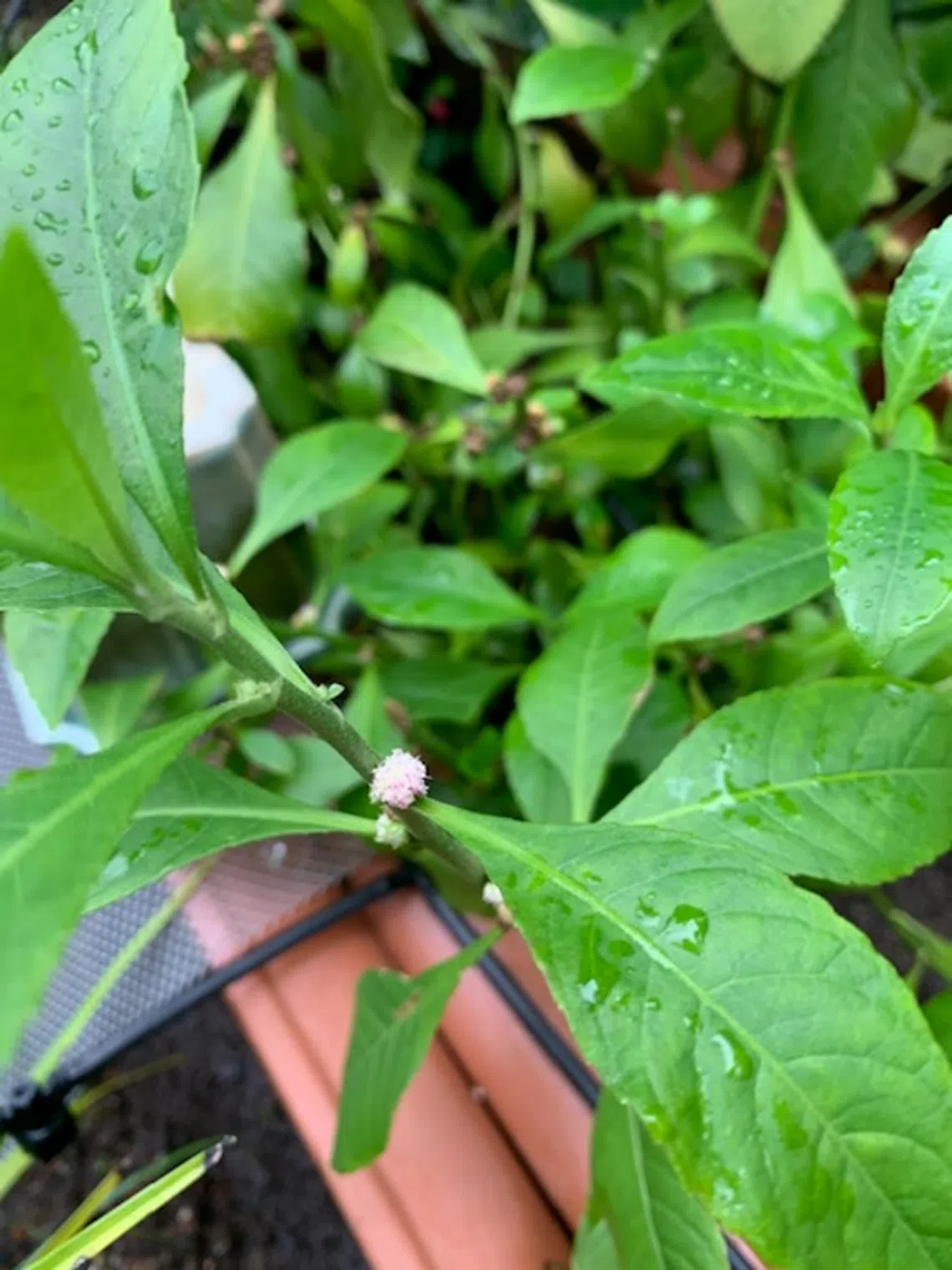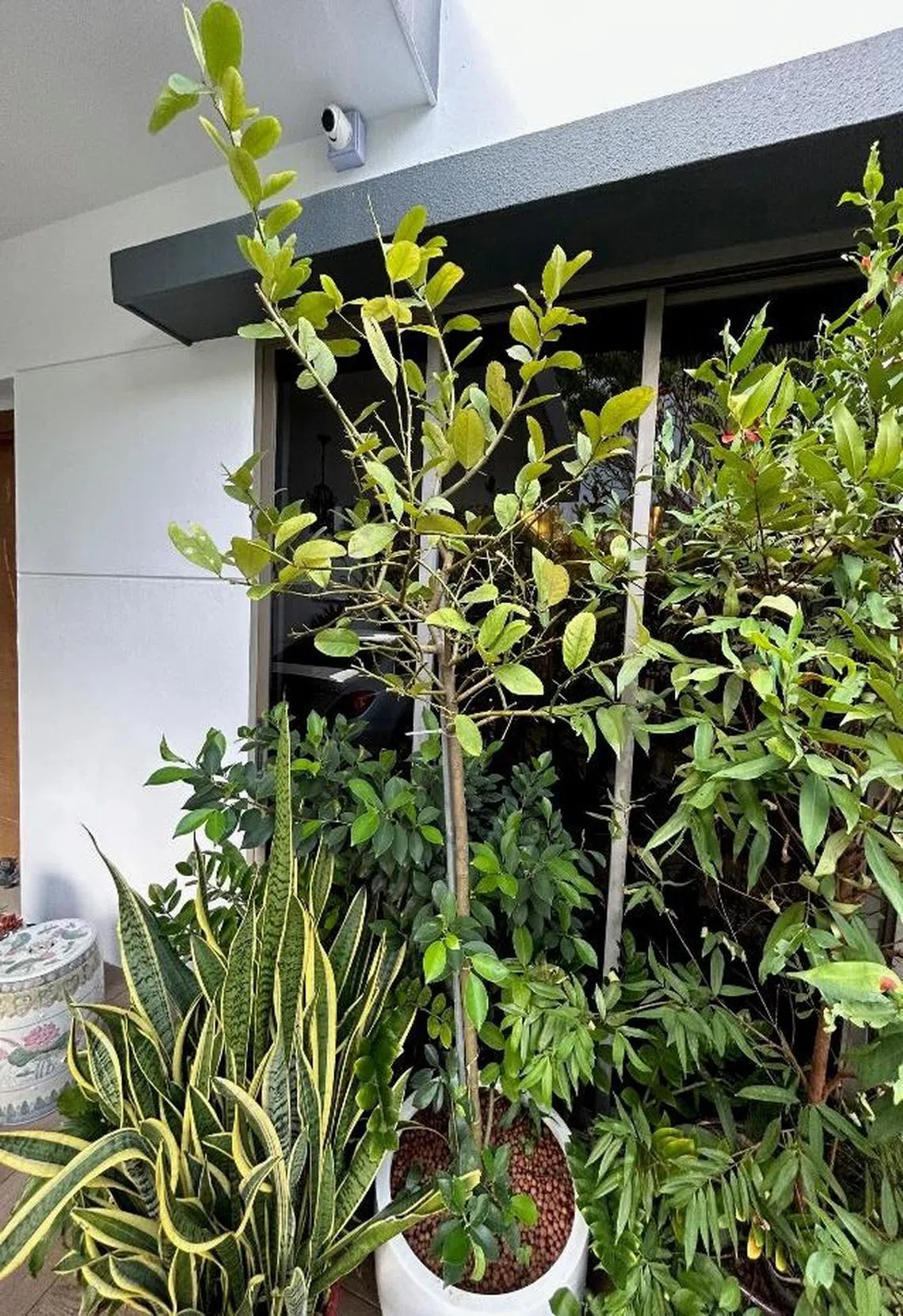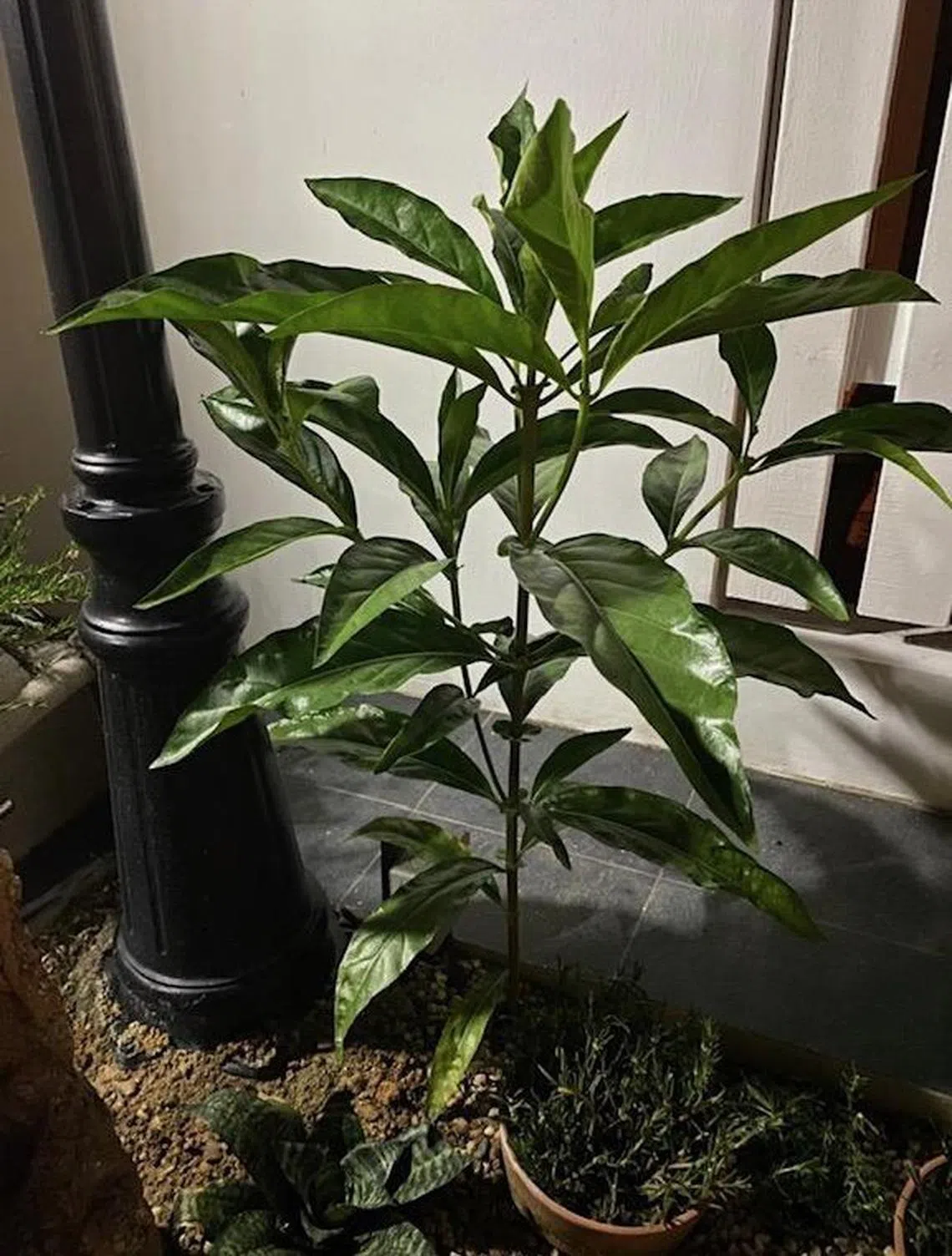Root Awakening: Let sap dry before handling fig plant and fruit
Sign up now: Get ST's newsletters delivered to your inbox

Wear gloves when harvesting figs.
PHOTO: ADRIAN LING
Wilson Wong
Follow topic:
Fig sap may irritate skin
I just harvested my fig plant. When I cut the fruit, it sometimes produces white sap. Is this toxic? What is the correct method of harvesting figs?
Adrian Ling
Fig plants exude milky sap when any part of the plant is cut and this liquid may irritate sensitive skin.
Wear gloves when you are pruning the plant or harvesting its fruit, and let the sap dry out before handling the cut parts.
Plant could be Ant-bush

The leaves of this plant are edible.
PHOTO: KRIS ANG
What is this plant and what is it used for?
Kris Ang
This weed resembles many other plants. If it grows quite large, with leaves that are up to 12cm long and 4cm in width, it could be a weed botanically known as Struchium sparganophorum.
The common names of this weed include Ant-bush and Yerba De Faja, and it belongs to the daisy family (Asteraceae). Its leaves can be cooked and eaten and the plant has medicinal uses in Nigeria and some other African countries.
Check lemon plant’s soil and roots

The lemon plant does not tolerate wet feet.
PHOTO: CHIN YEE CHOONG
My lemon plant was healthy and fruiting until about six months ago, when the leaves started turning yellow and it stopped producing fruit. I fertilise it regularly and water daily. I checked the leaves for pest infestation, but did not find any. What is wrong?
Chin Yee Choong
Has the plant been grown in the same pot since you bought it? You may want to check the health of its roots and the soil in which the plant is growing. Note that this plant does not tolerate wet feet.
Remove the layer of expanded clay on top of the soil and check whether the soil is compacted, as this will lead to poor drainage and aeration. This, in turn, will cause roots to stay wet for prolonged periods and the plant will not be able to thrive.
You may need to repot the plant. Cut off roots that are black, mushy and rotten. Do not remove all the soil from the root system, as this can shock the plant. Repot it in a growing mix that has good-quality compost and coarse gritty materials, such as fine expanded clay pellets or pumice. These will enhance soil drainage and aeration.
Place your lemon plant in a cool, shaded corner of your garden until you see new growth. A hot and windy location will dry the plant out.
Vine could be the Bush Grape

This creeping plant produces attractive but inedible fruit.
PHOTO: JESSY TAN
What is this creeping plant? I spotted it growing in one of my pots a few weeks ago. Is it poisonous?
Jessy Tan
Your plant may be the Bush Grape (Cayratia mollissima). This species produces stems with tendrils that curl around structures to help it climb.
The vine produces clusters of round, pink fruit. However, these are not edible, as they contain calcium oxalate crystals that will burn the mouth and throat when eaten raw.
Shrub is a young Noni

The Noni plant’s pungent fruit are used as ingredients in traditional medicine and health supplements.
PHOTO: CELINE LOW
What plant is this?
Celine Low
This plant looks like a sapling of the Noni (Morinda citrifolia), which is also known as the Indian Mulberry, Beach Mulberry and Vomit Fruit. It has pungent fruit which can be used as an ingredient in health supplements and traditional medicine.
Answers by Dr Wilson Wong, an NParks-certified practising horticulturist and parks manager. He is the founder of Green Culture Singapore and an adjunct assistant professor (Food Science & Technology) at the National University of Singapore.
Have a gardening query? E-mail it with clear, high-resolution pictures of at least 1MB, if any, and your full name to . We reserve the right to edit and reject questions.

